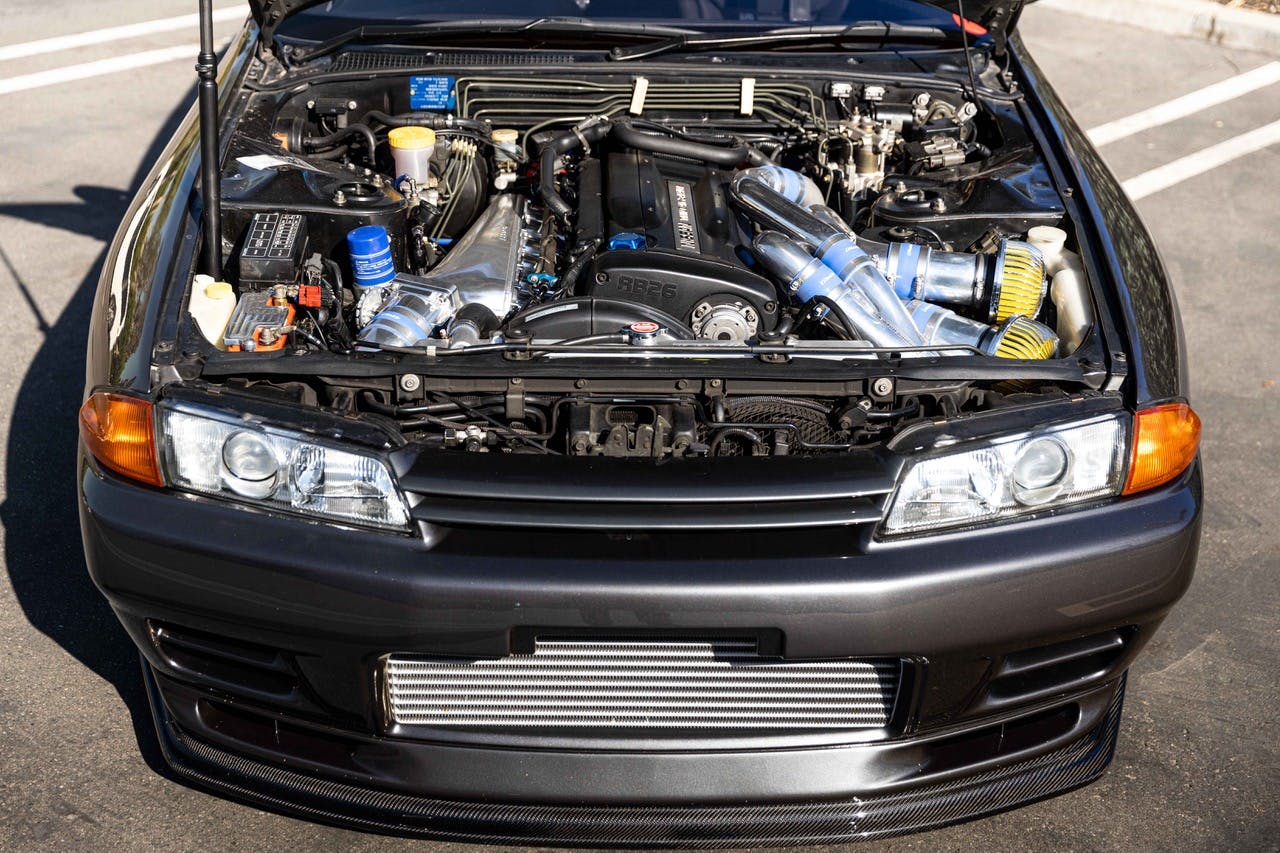Media | Articles
Why Japanese car parts are getting harder (and pricier) to source
“There goes my wheel,” I thought matter-of-factly as I watched my left front wheel bound away from me like an excited kangaroo. My hub flange failed mid-corner while I was racing my 2000 Miata at Mid Ohio in October 2020, ending my race and beginning my search for a better hub solution.
I was fortunate that my only injury was to my wallet. Still, the failure highlighted a deeper issue with seemingly common parts for Japanese cars—the good stuff is increasingly hard to come by. OEM hubs for Miatas have long since become difficult, if not impossible to find, so the next-best option is to go with a top-tier manufacturer that supplies OEMs. Yet this “first-rate” replacement failed after just a couple race weekends, due to the inherently looser tolerances of a non-OEM part.
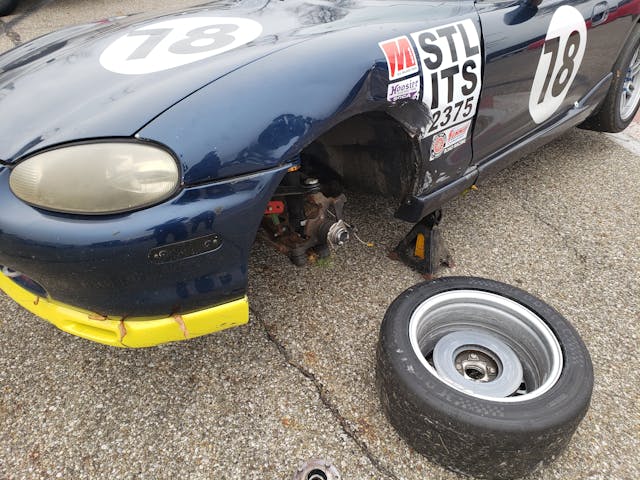
It’s not just hubs, and it’s not just Miatas. Getting a quality part for a Japanese car used to be as simple as walking up to the parts counter at your local dealer or parts store (or clicking on the tuning shop in Gran Turismo). These days, finding OEM or equivalent-quality replacement parts, or that perfect ‘90s-era mod can take a bit of sleuthing.
“It’s surprising how much everything costs to restore these cars to stock, and how hard it can be to hunt down these parts,” said Kenji Sumino, President of Greddy Performance Products, and longtime industry veteran.
One need look no further than Skyline GT-R parts to see what Sumino is talking about: It’s not unusual to see a pair of genuine NISMO R32 mass airflow sensors listed at $1900. New door cards can cost as much as $4000, and NISMO steering wheels can fetch as much as $3000.
Marketplace
Buy and sell classics with confidence
A couple of factors conspired to create this challenge. Set aside supply chain issues and other pandemic-related problems for a moment and consider one of the biggest elements: These cars were used heavily as intended.
Japanese marques offered durable, affordable entries into the sports car world, and owners put them to work—whether at the drag strip in a Mk IV Supra, a road course in a Miata, or anything in between. It should come as no surprise, then, that these cars experienced a bit more abuse than your average Porsche, Lotus, or Ferrari, and went through a lot of replacement parts over the last two decades.
Manufacturers support their older models to varying degrees—some have a set time when they stop producing parts for a given vehicle while others will continue to supply parts as long as there is demand. On the whole, though, the inventory of OEM parts to maintain these now 20+ year-old well-used vehicles has dwindled, and limited supply has driven up costs up for what parts remain.
Another critical factor is the massive tuner culture that surrounds these cars. Video games, movie franchises, and an uptake across a variety of motorsports had outsize influence on Japanese car enthusiasts, prompting many to modify these cars extensively. There was no forethought for preserving these cars because they were comparatively affordable—almost no one was thinking about a future containing $300,000 Skyline GT-Rs or a $100,000 Integra Type R back in 2001. The impact of the modding craze in the 1990s and 2000s is twofold: first, it is driving demand for OEM parts as people seek to return cars to original condition. Second, vintage-correct modification is more accepted within this collector community, meaning rare aftermarket parts also command a premium.
Last but not least, there’s the trickle-down impact from the rising values of Japanese enthusiast cars. “The uptick in value is due to the cars themselves,” said Sumino.
That is obviously the case for top-tier cars like the Nissan Skyline GT-R. As these have become six-figure cars, collectors on both sides of the Pacific have hunted down factory-correct components—often to extinction. For more common cars like the Miata, there’s another factor: As the cars become more valuable, fewer are finding their way to the scrapyard. That’s a good thing, of course, but it means a major source of affordable second-hand parts are drying up.
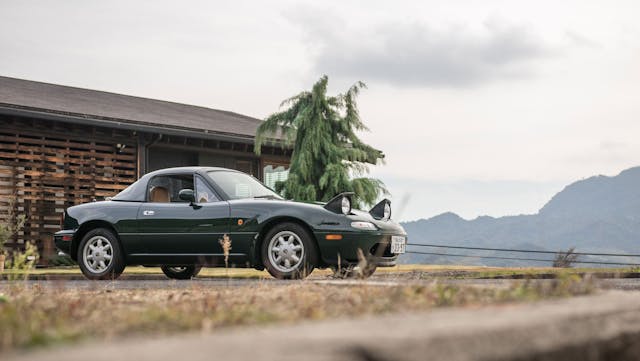
If rising values for these cars has helped create the parts shortage, it’s also convincing people that it’s worth their while to find solutions. That includes OEMs in Japan. Honda, Mazda, Nissan’s NISMO division, and Toyota by way of Gazoo Racing all have parts programs for heritage cars.
Yet these catalogs remain somewhat limited. According to Katsu Takahashi, co-founder of Built by Legends, a company offering complete restomods of iconic tuner cars, Japanese OEMs are at the very early stages of this process compared to their European counterparts. Many parts are expensive to reproduce and automakers continue to weigh whether there is enough of a market to justify a new production run. For instance, Toyota’s catalogue supports the Supra, 2000GT, Trueno, and Land Cruiser. If you have a Sera or a Celica, you’re out of luck for the time being. Mazda Japan currently supports the MX-5 and RX-7 with a limited parts list, while Mazda USA carries a healthy supply of parts for the MX-5 but does not stock RX-7 components. Nissan tells us there is “talk” of expanding support for other cars, such as the Z.
Full refresh and restoration plans offered by NISMO and Honda for their top tier cars such as the GT-R and NSX are another way OEMs support their heritage cars. However, these command hefty premiums—a “new” restored R32 can come close to $400,000 and waiting lists can stretch out over a couple years. Mazda offers a similar program within Japan for its MX-5, albeit at a slightly more affordable cost of just under $50,000.
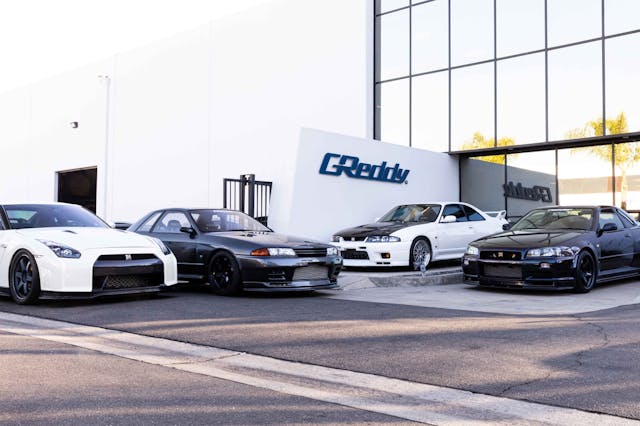
The strong enthusiast culture around Japanese cars has always relied not only on manufacturers but on a hugely popular tuner ecosystem. In a time where parts are becoming harder to find, this additional layer of support may prove key to preserving these freshly-considered classics.
“As a result of the resurgence of demand, Greddy has brought back some items that were discontinued long ago,” said Sumino.
If you are a Japanese car enthusiast, Greddy is a familiar name. The aftermarket parts supplier and parts importer has been a critical source for tuners across the globe for decades, and Sumino has been with the company since 1995. He’s seen firsthand industry trends come, go, and return again. He says Greddy is stocking a lot of products for Skyline GT-Rs, in large part to serve a new audience in the United States, and has also seen an uptick in interest in products for Nissan’s 300ZX and the Mazda RX-7.
In addition to people pursuing dream cars of their youth, Sumino sees another factor driving demand: “There aren’t that many new cars for enthusiasts, so people are going back to ’90s cars and enjoying them.” He added that many of Greddy’s top-selling items are for older cars, even though they have many offerings for new cars, too.
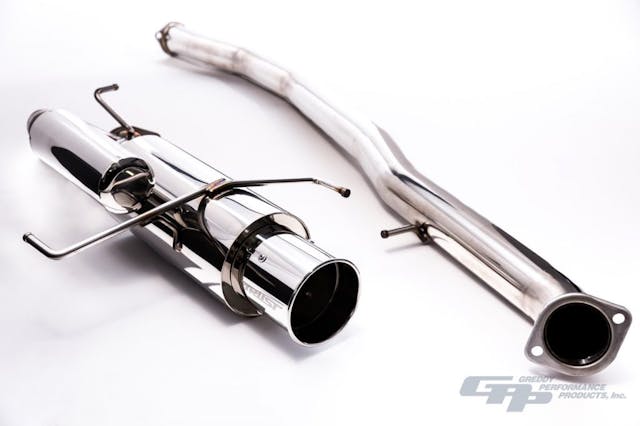
“It’s a little bit like American hot rod culture,” Sumino said. He indicated that original-condition cars are retaining the most value, but work done by known tuning shops or tasteful modifications would not devalue the car significantly, or at all. “Like with American muscle cars, the restomod movement is strong in the Japanese market,” he shared. Top-tier shops, like Takahashi’s Built by Legends, offer complete restomods of iconic tuner cars.
Sometimes the used marketplace is the only option for those obscure aftermarket parts you’re after. If you want that special part to impress your friends at the next car meet, head over to Instagram. There you’ll find users like s_jerin or gtr_europe, who trade in motorsports jackets, steering wheels, transmission gears, or anything you can imagine for your JDM classic. These two sellers primarily list GT-R-related items, but they and others like them are an excellent source for unique finishing touches to set your ride apart. Be prepared for the price tag, though—many, if not most of the items listed are out of production and unlikely to make a return.
What about those of us who race these vintage Japanese cars? As I discovered first-hand, the stresses of the track—exacerbated by tires with increased grip—can torment a sub-standard replacement part. Visit any SCCA or NASA race weekend across the country and you are bound to see a fleet of older Miatas, several RX-7s, and a swath of different Hondas, all of them voraciously consuming everything from ball joints to clutches much faster than street cars.
For my hubs, at least, there’s a solution. Justin Lee and Jeff Preston of MiataHubs have been racing Miatas for years and experienced multiple failures along the way. “The quality of the current parts store hub offerings is disappointing to say the least,” Lee said, “but even with the original OEM Mazda quality and tolerances, the stock hubs that were designed for 185-section tires and 115 hp aren’t up to the task of today’s Miata race cars, especially in endurance racing.”

After two years of prototyping, testing, and a very productive collaboration with the research and motorsports divisions of SKF, a well-known bearing supplier, MiataHubs was born. Its billet-machined hub addresses weaknesses only made apparent by racing.
As we see elsewhere, the solution isn’t cheap: at more than $1200 for a set of front hubs, MiataHubs are about six times as expensive as a pair from Timken, an OEM and aftermarket supplier. But that’s a small cost for something that prevents catastrophic failure and helps Japanese sports cars maintain their strong presence on racetracks across the globe.
Whether you’re looking to return your 300ZX to showroom original or flog your ’99 Civic Si at a track day, finding the right parts has, no doubt, become harder and more expensive. Fortunately, companies and enthusiasts are taking note of the rising parts demand and are beginning to meet market needs. Just the same, be prepared to spend some time and diligence searching, and likely waiting, for that key component to your build.
Via Hagerty Insider






